Pug
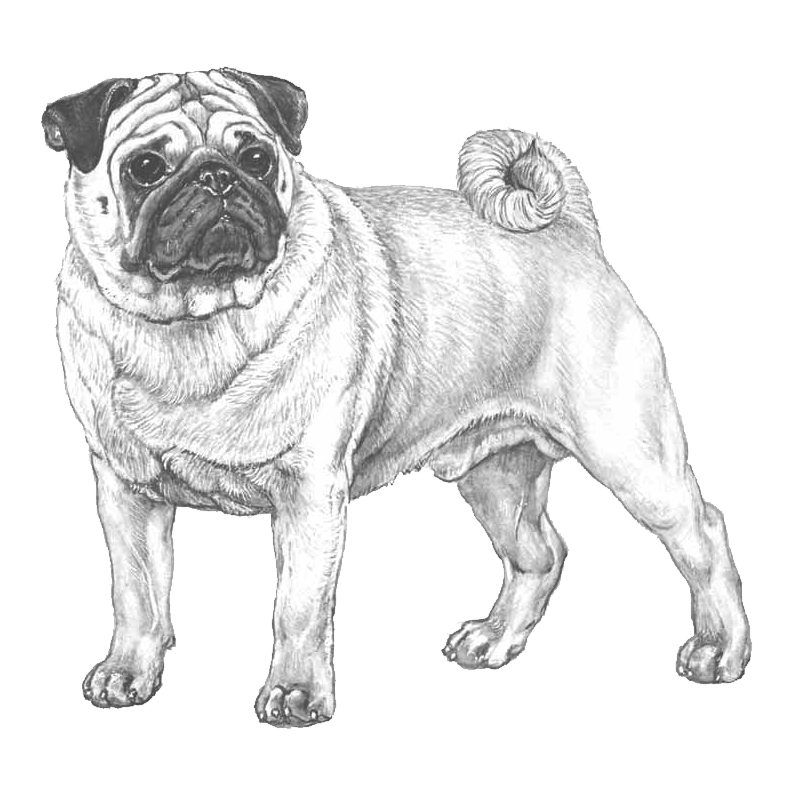
- Mops
- Carlin
- Doguillo
- National kennel clubs and breed clubs (see, e.g. Breeding/Health Strategy Documents, below)
- Population-level statistics (see, e.g., Swedish Insurance Data, below)
- Research articles
- Breed club surveys
- Breed-specific information on rates of disease and death from Agria Pet Insurance (Agria Djurförsäkring) is available for many breeds.
- Registered pugs (Internet Archives link) - Suomen Mopsikerho ry
- The Kennel Club, UK: Breed Watch (Category 3)
- Sweden: Breed-specific Breeding Strategies: (in Swedish) and/ or English summary
- Finland: JTO: Mopsin jalostuksen tavoiteohjelma Suomen Mopsikerho ry 2020
- UK: 5 Star Health Scheme: https://www.pughealth.org.uk/pug-5-star-health-scheme/
A dignified dog, very intelligent, good-natured and sociable, he is robust and self-reliant, with great character and personality. An adaptable companion for both young and old, and one who integrates himself very closely with family life. He can talk with his eyes, has his mischievous moments, and usually lives to a ripe old age.
Source: The Kennel Club: https://www.thekennelclub.org.uk/search/breeds-a-to-z/breeds/toy/pug/
Links to Breed Descriptions
AKC Video (link - https://youtu.be/tm745gQeGMk
View more videos on AKC's YouTube Channel: https://www.youtube.com/user/AmericanKennelClub
SCC Video (link - https://youtu.be/4LmJgwJ2yFg
View more videos on SCC's YouTube Channel: https://www.youtube.com/channel/UCKR90_uWp8dUNpGTfQ_y_Zw
See: The German Kennel Club (VDH) for information and video (if available).
(Hint: your browser should be able to Translate to English, at least for text (e.g., right click in Google Chrome or Internet Explorer).)
http://www.vdh.de/welpen/mein-welpe/mops
Video (link - https://youtu.be/tmD6GF4HRXM):
This and other breed videos are available in full length here: www.meisterpetztv.de
Other Names for Breed
Country of Origin and Parent Breed Club
Origin: China
Patronage: Great Britain
Health and Well-Being
Some sources of health information include:
Breed-Specific Articles
Summary of Kennel Club Breed Records: Pug 2020
A new research report, Summary of Kennel Club Breed Records: Pug 2020, has been produced by Cassandra Smith. The report utilises publicly available data offered by The Kennel Club to describe health and breeding-related statistics and information. The author’s previous reports on similar and other breeds have been well-accepted, with appropriate methodology and presentation.
Get a GRIHP! on Pugs
 This article on Pugs is part of a series to highlight the Big Picture of health, welfare and breeding and to help develop Globally Relevant Integrated Health Profiles (GRIHPs) for many breeds. See IPFD's Get a GRIHP! on Breed Health Initiative
This article on Pugs is part of a series to highlight the Big Picture of health, welfare and breeding and to help develop Globally Relevant Integrated Health Profiles (GRIHPs) for many breeds. See IPFD's Get a GRIHP! on Breed Health Initiative
There are many others doing great work to advance heath, well-being, and welfare in this wonderful breed. We reference and link to terrific work, developments, reports, and research from the UK, USA, Sweden, Finland, and more below. Thanks to all of those working on behalf of Pugs.
ALSO PLEASE SEE: the companion article to this GRIHP - Pug - DogWellNet Resources
This page contains links to numerous articles, blogs, research, IPFD's Partners and Collaborators content, and videos that relate to Pugs. The Big Picture of health and welfare in Pugs is complicated and many dedicated people are working to address issues in the breed.
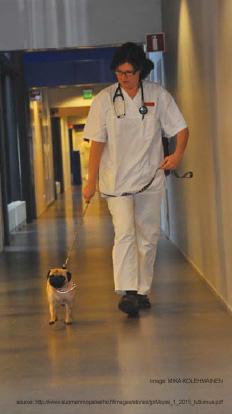 See Katariina Maki's Blog post, Finnish Pug Dog Club to adopt walking test for breeding dogs
See Katariina Maki's Blog post, Finnish Pug Dog Club to adopt walking test for breeding dogs
"Preliminary results on a study examining walking test results on Pugs and Bulldogs were presented. The results showed that the test is able to distinguish between good and bad breathers."
 • Demography and health of Pugs under primary veterinary care in England
• Demography and health of Pugs under primary veterinary care in England
Dan G. O'Neill, Elisabeth C. Darwent, David B. Church and Dave C. Brodbelt
The complete paper is freely available Open Access at:
Canine Genetics and Epidemiology.
The Pug Dog Club of America: Brachycephalic Syndrome and the Pug
This page includes a link to an image and content rich 59 page education presentation given at the PDCA National on Monday, October 1, 2018 by Bryden J. Stanley, BVMS, MACVSc, MVetSc, DACVS Michigan State University entitled The Brachycephalic Predicament in which the following topics are explored, in depth:
•Brachycephalicism–what is it? •Primary findings •Secondary changes •Evaluation of the upper airway •Current treatment options •Prognosis •Complications •Newer treatment options •Ongoing research
Summary points include: •Understand the brachycephalic airway •Full upper airway evaluation •CT•Chest X-rays •Treat early •Monitor closely during procedures •Renewed research interest •Newer treatments •Need to breed out
2020...
The Brachycephalic Working Group has posted resources on Bulldogs, French Bulldogs & Pugs...
VetCompass developed infographics, which summarise brachycephalic breed research...
What's available?
Pugs: Weighing up health priorities (click for full paper)
See links to the papers and further information at: http://www.ukbwg.org.uk/?page_id=490
Breed Standards
There are numerous breed standards.
The basis of breed/conformation shows is the judging of pedigree dogs against the 'Breed Standard', which is a picture in words that describes the range of features that are deemed appropriate for the breed.
Three of the major international standards are:
Breed-Specific Statistics
1. Swedish Insurance Data
This PDF document contains Pug registrations from 2002 - 2011 for the UK, Australia, Italy, Germany, Sweden, Spain, Finland, Portugal, Denmark, and South Africa.
Statistics, registrations and health related
Breeding/Health Strategy Documents
Health/Breeding Strategy Documents and Links:
See more information on hemivertebrae screening at The Pug Breed Council's web page, Hemivertebrae Scheme: https://www.pughealth.org.uk/hv/
5. 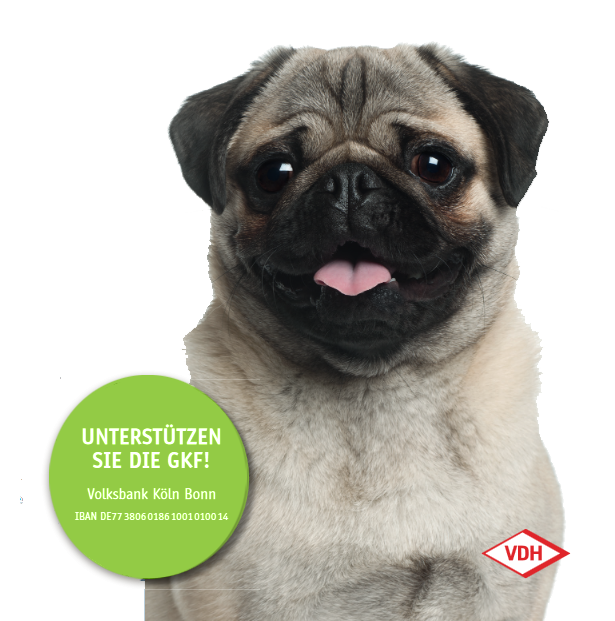 Germany: VDH: 2019 - New Fitness Test for Pugs (English) VDH-2019-New Fitness test for Pugs - EN.pdf
Germany: VDH: 2019 - New Fitness Test for Pugs (English) VDH-2019-New Fitness test for Pugs - EN.pdf
Neuer Fitnesstest für Möpse
GKF Flyer 2019
Breed-Specific DNA Tests:
Other Breed-Specific Webpages
Body Condition Score Chart - Pugs - University of Cambridge - BOAS Research Group (UK)
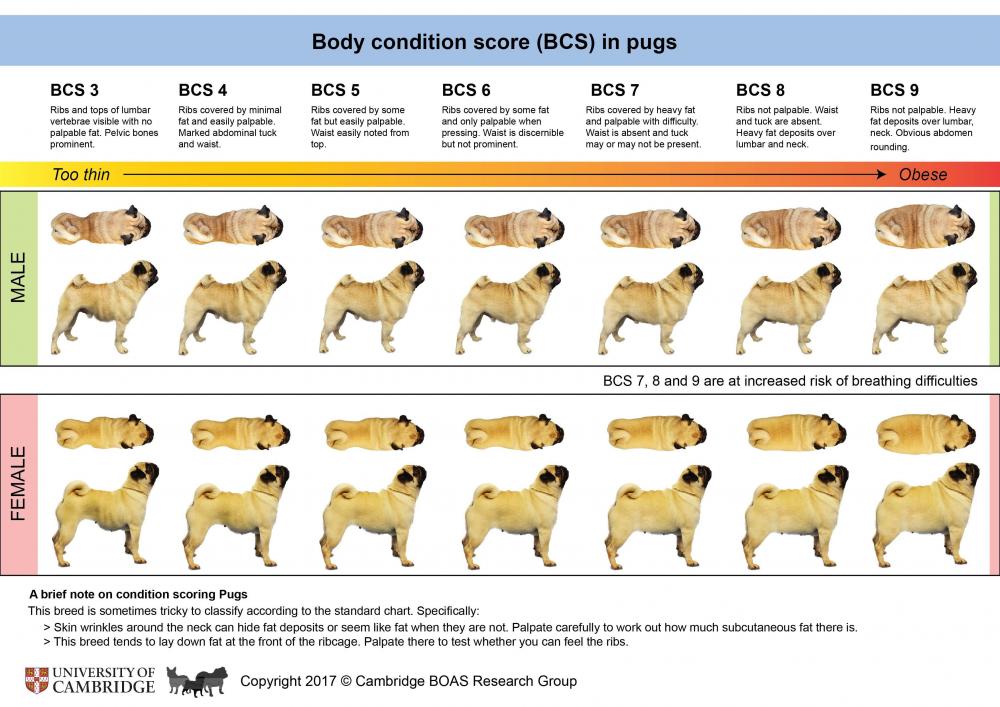 The BOAS Research Group has produced a number of reports and tools to assess brachycephalic breeds - the Pug breed is included in their work.
The BOAS Research Group has produced a number of reports and tools to assess brachycephalic breeds - the Pug breed is included in their work.
Cambridge BOAS Research Group
Department of Veterinary Medicine
University of Cambridge
Website: http://www.vet.cam.ac.uk/boas
E-mail: boas@vet.cam.ac.uk
BOAS Test Biannual Report - Date: 29/01/2018
This report covers Pugs, French Bulldogs and Bulldogs.
Total participated dogs (volunteered and clinical and others): 1305
The summaries presented are for volunteered dogs (n=907) only.
The evaluation referenced in the report involves a grading system (March 11, 2015). The Grading System document can be found here: https://www.vet.cam.ac.uk/images/boas/Functionalgrading.pdf
Combined report and grading system for Pugs
A bit more on result reference from the Brachycephalic Working Group (BWG)...
"Test Result reference:
Grade 0 – BOAS free; annual health check is suggested if the dog is under 2 years old.
Grade I – clinically unaffected but with mild respiratory signs, annual health check is suggested if the dog is under 3 years old.
Grade II – BOAS affected with moderate respiratory signs. The dog has a clinically relevant disease and requires management, including weight loss and/or surgical intervention.
Grade III –BOAS affected with severe respiratory signs. The dog should have a thorough veterinary examination with surgical intervention."
For further information on the University of Cambridge and BOAS research | to participate see: https://www.vet.cam.ac.uk/boas/help
Breed-Specific Research
From Germany in 2022...
Mach R, Wiegel PS, Bach J-P, Beyerbach M, Kreienbrock L, Nolte I. Evaluation of a Treadmill-Based Submaximal Fitness Test in Pugs, and Collecting Breed-Specific Information on Brachycephalic Obstructive Airway Syndrome. Animals. 2022; 12(12):1585. https://doi.org/10.3390/ani12121585 https://www.mdpi.com/2076-2615/12/12/1585
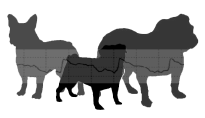 UK: Non-invasive Respiratory Function Assessment in Brachycephalic Dogs
UK: Non-invasive Respiratory Function Assessment in Brachycephalic Dogs
See the Flyer for further explanation of this research
owner- breeder participation options
Queen's Veterinary School Hospital
Department of Veterinary Medicine
University of Cambridge
BOAS Research website: http://www.vet.cam.ac.uk/boas
High prevalence of gait abnormalities in pugs
Cecilia Rohdin,1,2 Karin Hultin Jäderlund,3 Ingrid Ljungvall,1 Kerstin Lindblad-Toh,4,5 Jens Häggström 1
Veterinary Record (2018)
doi: 10.1136/vr.104510
1 Department of Clinical Sciences, Swedish University of Agricultural Sciences, Uppsala, Sweden
2 Anicura, Albano Animal Hospital, Danderyd, Sweden
3 Department of Companion Animal Clinical Sciences, Norwegian University of Life Sciences, Oslo, Norway
4 Department of Medical Biochemistry and Microbiology, Science for Life Laboratory, Uppsala University, Uppsala, Sweden
5 Broad Institute of Harvard and Massachusetts, Institute of Technology, Cambridge, MA, USA
E-mail for correspondence: cecilia.rohdin@slu.se
Provenance and peer review
Not commissioned; externally peer reviewed.
Received May 13, 2017
Revised September 22, 2017
Accepted November 11, 2017
A brief overview of the study in MRCVS News... http://mrcvs.co.uk/en/news/16897/
QuoteFrom the study... The objective of this prospective study was to determine the prevalence of gait abnormalities in a cohort of Swedish pugs by using an owner-based questionnaire targeting signs of gait abnormality and video footage showing the dog’s gait. This study also evaluated associated conditions of abnormal gait, including other health disorders prevalent in the breed. Five hundred and fifty (550) pugs registered in the Swedish Kennel Club, of one, five and eight years of age, in 2015 and 2016, were included in the study.
Authors: Aromaa, M; Lilja-Maula, L; Rajamäki, MM
Source: Animal Welfare, Volume 28, Number 3, August 2019, pp. 287-298(12)
Publisher: Universities Federation for Animal Welfare
DOI: https://doi.org/10.7120/09627286.28.3.287
Internal - s5.pdf
Breed Clubs
We are listing sites for breed clubs with health or other information that might be helpful. Follow links below.
Finland: Suomen Mopsikerho ry: http://www.suomenmopsikerho.fi/
Sweden: Mopsorden: http://mopsorden.se/
UK: The Pug Dog Club: http://pugdogclub.org.uk/
US: The Pug Dog Club of America: https://www.pugdogclubofamerica.com/
Report Entry
 Donate
Donate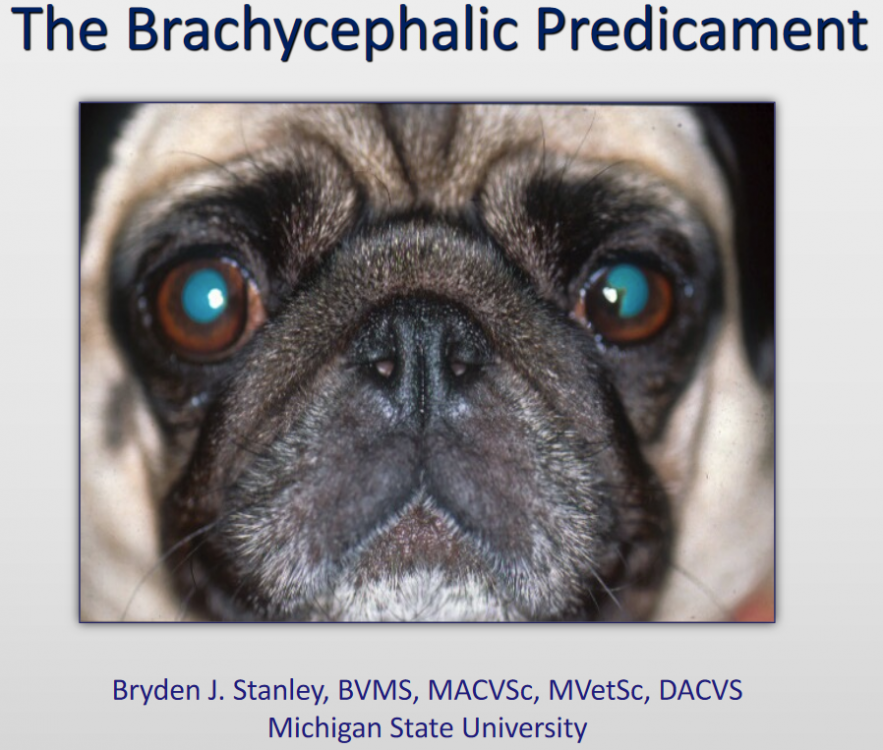
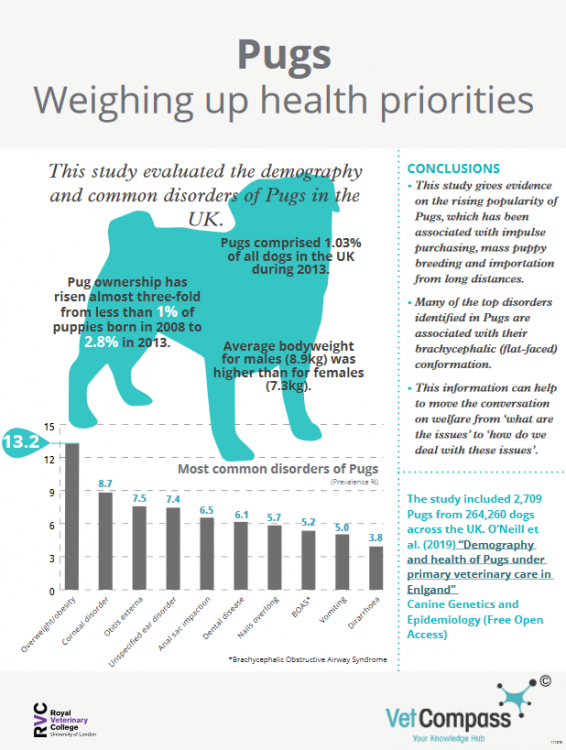
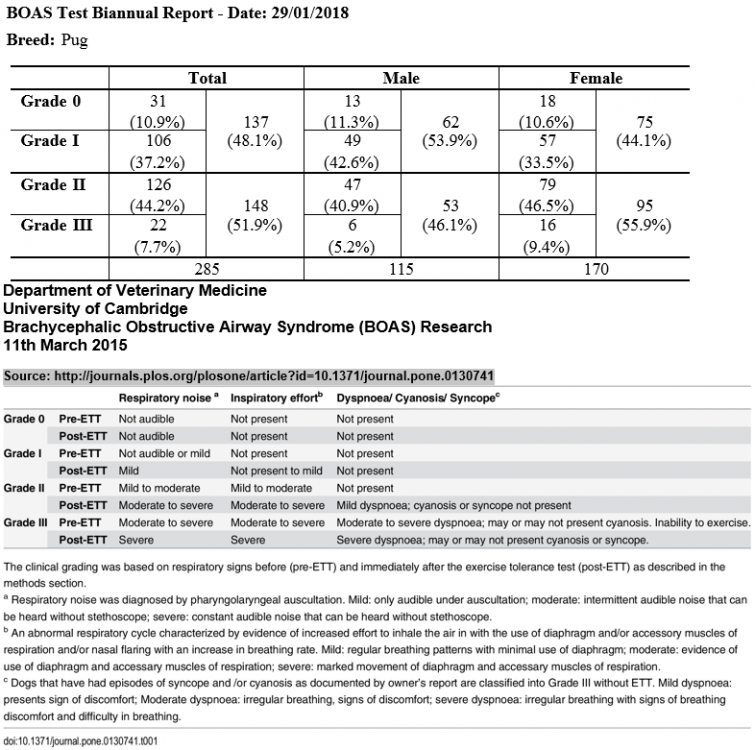

Recommended Comments
There are no comments to display.
Join the conversation
You can post now and register later. If you have an account, sign in now to post with your account.
Note: Your post will require moderator approval before it will be visible.